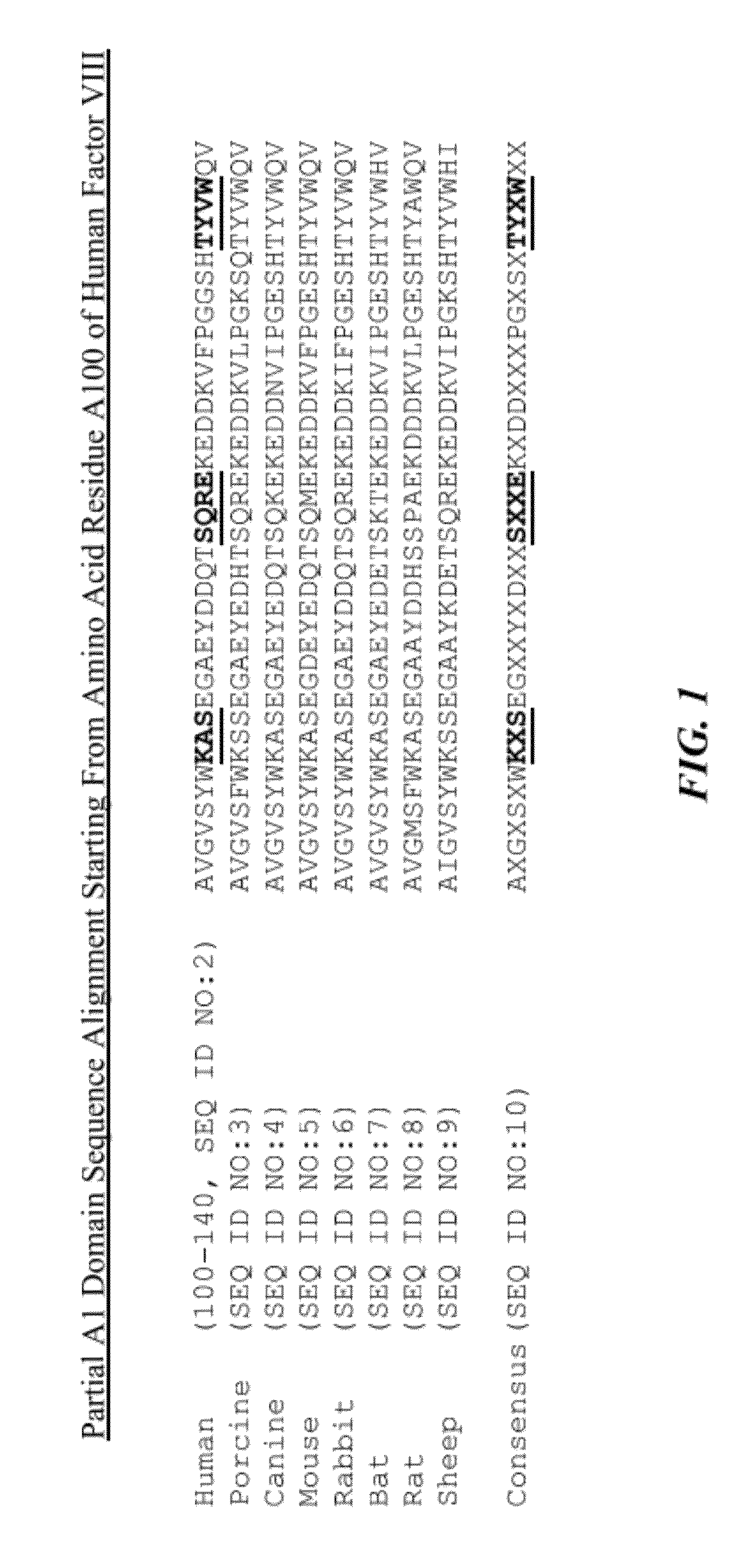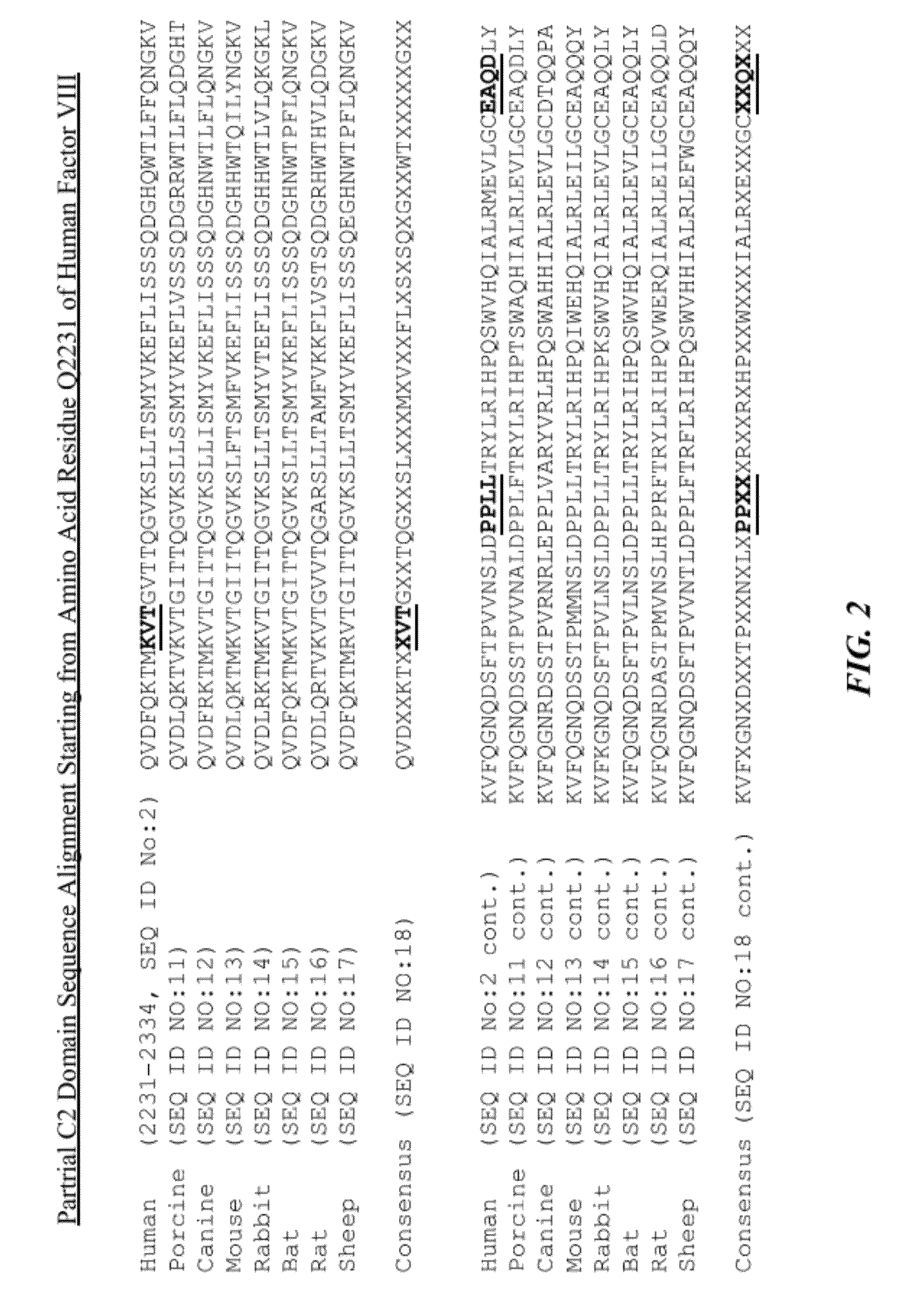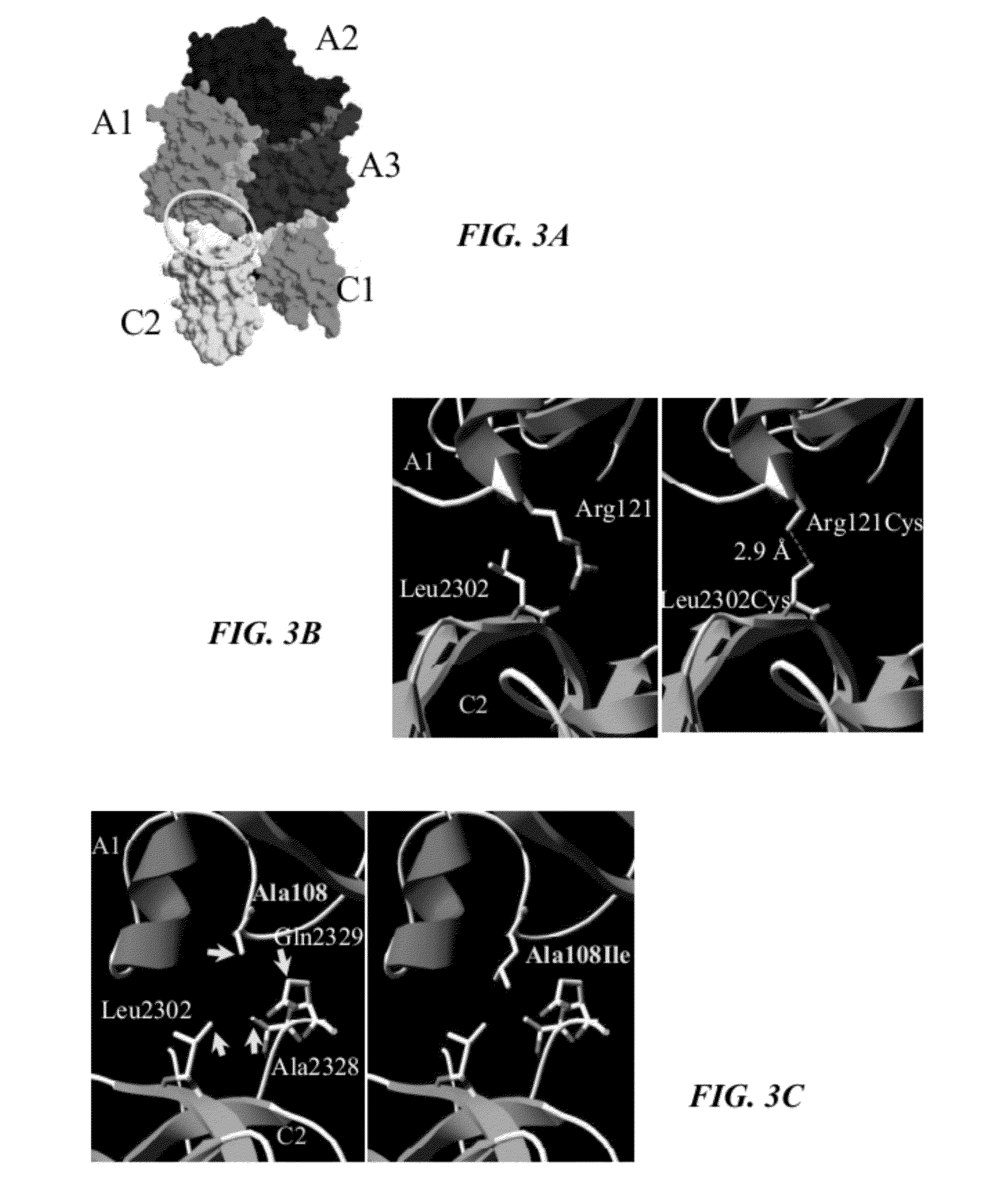Recombinant factor VIII having enhanced stability following mutation at the A1-C2 domain interface
a domain interface and recombinant factor technology, applied in the field of recombinant factor viii having enhanced stability following mutation at the a1c2 domain interface, can solve the problems of significant destabilization of cofactors, increased activity decay rate, and undesirable mutation types, and achieve the effect of increasing the buried hydrophobic area, reducing the buried hydrophilic area, and enhancing inter-domain binding affinity
- Summary
- Abstract
- Description
- Claims
- Application Information
AI Technical Summary
Benefits of technology
Problems solved by technology
Method used
Image
Examples
example 1
Recombinant Expression and Purification of Factor VIII Mutants Possessing Modified A1 and C2 Domain Interactions
[0148]The A1 and C2 domains show close proximity to one another in the factor VIII crystal structure (FIG. 3A). These regions were investigated with the aim towards enhancing inter-domain interactions to positively alter affinity and stability parameters. Examination of the A1-C2 interface provided two possible approaches for increasing the inter-domain affinity. Although the orientation of side chains cannot be discerned due to the resolution (˜4 Å) of the structure (4), the putative spatial separation of several paired residues indicated that mutagenesis of these residues to Cys could result in formation of a nascent inter-domain disulfide bridge. Paired A1 / C2 domain residues were identified that appeared to meet this distance requirement and included Ser119 / Pro2300, Gln120 / Pro2299, Arg121 / Leu2302, Ala108 / Ala2328, and Trp106 / Ala2328.
[0149]Double mutations where each resi...
example 2
Confirmation of Disulfide Bridge in Arg121Cys / Leu2302Cys Factor VIII Variant
[0154]Evidence for high efficiency disulfide bridging between factor VIII A1 and A3C1C2 domains in this double mutant, as judged by Western Blotting is shown in FIG. 4. For this analysis, WT factor VIII and the Arg121Cys / Leu2302Cys factor VIII variant were cleaved with thrombin to generate the factor VIIIa heterotrimer prior to SDS-PAGE, which was then run in the absence and presence of disulfide bond reduction using DTT. Blots were probed with an anti-A1 antibody (58.12, lanes 1-4) and an anti-A3 antibody (2D2, lanes 5-8). Both A1 and A3C1C2 subunits derived from the factor VIII Arg121Cys / Leu2302Cys variant were detected at the ˜120 kDa band, consistent with the sum of their mol masses under non-reducing conditions (lanes 2 and 6), while reduction by 0.1 M DTT yielded the separated subunits (lanes 4 and 8). Based upon the band densities of bridged and free subunits in the non-reduced lanes, it appeared that...
example 3
Affinity of the WT and Ala108Ile Factor VIII Variant A1 Subunits for A3C1C2
[0155]To assess the affinity of the Ala108Ile A1 domain for C2 domain, the purified factor VIII variant and WT were treated with thrombin and the A1 subunits were separately purified as described supra. A1 subunits were then reacted with the environment-sensitive fluorescent probe, acrylodan, and these reagents were used to probe binding with the A3C1C2 subunit. The site for acrylodan attachment is likely the lone free thiol in A1 at Cys310, which is in close proximity (Structure 16:597-606 (2008), which is hereby incorporated by reference in its entirety). Indeed, increases in the emission fluorescence from acrylodan-labeled A1 (AcA1) subunit have been previously observed when A3C1C2 was bound to the molecule (Wakabayashi et al, “Metal-ion Independent Factor VIII Subunit Association and the Role of Calcium and Copper for Its Affinity and Activity,”Biochemistry 40:10293-10300 (2001); Ansong et al., “Factor VI...
PUM
| Property | Measurement | Unit |
|---|---|---|
| clotting time | aaaaa | aaaaa |
| pH | aaaaa | aaaaa |
| pH | aaaaa | aaaaa |
Abstract
Description
Claims
Application Information
 Login to View More
Login to View More - R&D
- Intellectual Property
- Life Sciences
- Materials
- Tech Scout
- Unparalleled Data Quality
- Higher Quality Content
- 60% Fewer Hallucinations
Browse by: Latest US Patents, China's latest patents, Technical Efficacy Thesaurus, Application Domain, Technology Topic, Popular Technical Reports.
© 2025 PatSnap. All rights reserved.Legal|Privacy policy|Modern Slavery Act Transparency Statement|Sitemap|About US| Contact US: help@patsnap.com



